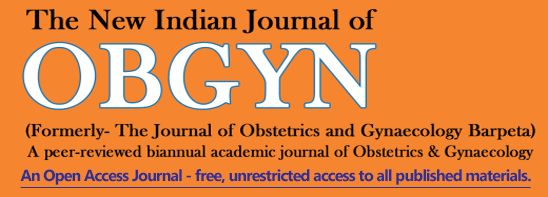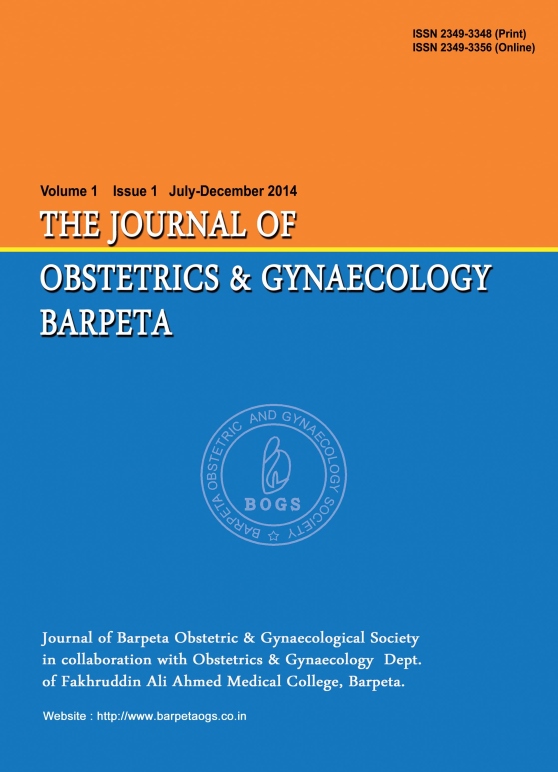
Journal of Obstetrics & Gynaecology Barpeta 1(1)
Peripartum cardiomyopathy (PPCM) - current review
Rajib Kumar Bhattacharyya
ABSTRACT
Peripartum cardiomyopathy, a rare life threatening type of dilated cardiomyopathy of unknown origin, occurs in previously healthy women causing a devastating form of cardiac failure affecting women mainly in their last months of pregnancy or early puerperium and often complicating their obstetrics as well as anesthetic management. Although the incidence is low—less than 0.1% of pregnancies - morbidity and mortality rates are high at 5% to 32%. The outcome of peripartum cardiomyopathy is also highly variable. For some women, the clinical and echocardiographic status improves and sometimes returns to normal, whereas for others, the disease progresses to severe cardiac failure and even sudden cardiac death. In acute care, treatment may involve the use of intravenous vasodilators, inotropic medications,an intra-aortic balloon pump, ventricular-assist devices, and/or extracorporeal membrane oxygenation. Survivors of peripartum cardiomyopathy often recover from left ventricular dysfunction; however, they may be at risk for recurrence of heart failure and death in subsequent pregnancies. Women with chronic left ventricular dysfunction should be managed according to guidelines of the American College of Cardiology Foundation and the American Heart Association. lesions seen in pregnancy include simple cysts, hemorrhagic cysts, leiomyomas, and hyperstimulated ovaries in patients who have undergone fertility treatments. Adnexal masses associated with pain include ovarian torsion and heterotopic pregnancy. Some adnexal lesions are detected incidentally that includes teratomas, endometriomas, hydrosalpinx, cystadenoma, and cystadenocarcinoma. Sonography is important in diagnosing, monitoring, and determining the malignant potential of these adnexal masses. In theabsence of symptoms or sonographic findings concerning for malignancy, patients should be expectantly managed. However, an adnexal mass suspicious for malignancy, at risk for torsion, or clinically symptomatic, surgical management is recommended. When surgery is indicated, laparoscopyis safe and feasible and both perinatal and maternal outcomes are favorable when performed by trained and experienced operators.
Volume 1 Issue 2
Volume 2 Issue 1
Volume 2 Issue 2
Volume 3 Issue 1
Volume 3 Issue 2
Volume 4 Issue 1
Volume 4 Issue 2
Volume 5 Issue 1
Volume 5 Issue 2
Volume 6 Issue 1
Volume 6 Issue 2
Volume 7 Issue 1
Volume 7 Issue 2
Volume 8 Issue 1
Volume 8 Issue 2
Volume 9 Issue 1
Volume 9 Issue 2
Volume 10 Issue 1
Volume 10 Issue 2

